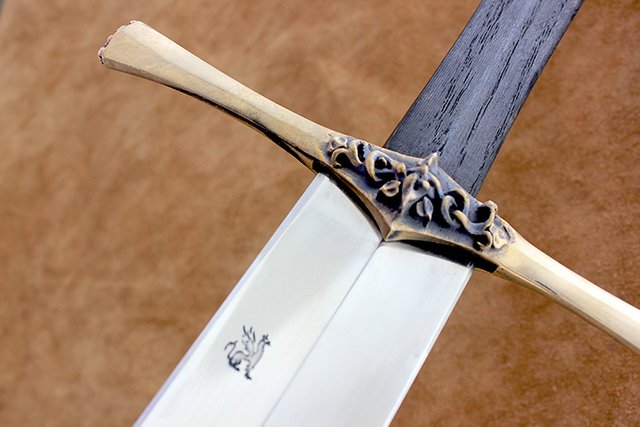The medieval era revered the sword as a symbol of honor and glory, elevating it to the status of a god-like weapon. Cults and rituals surrounding weapons have been prevalent among diverse civilizations worldwide, from ancient times to the era of firearms. This article delves into the concept of a guard, its historical significance, and its evolution as a decorative element in bladed weapons.

Photo: darksword-armory.com
Origin and Definition:
The guard, also known as the garda (from French "garde"), serves as a protective component between the blade and the handle of a bladed weapon such as a sword or saber. Initially, guards were simple flat bars, later evolving into small discs. From the 16th century onwards, guards took on round and convex shapes, eventually encompassing the hand partially or entirely. In some instances, guards expanded or branched out into multiple parts, depending on the type of weapon.
Typology and Design:
Together with the pommel (the end of the hilt), the guard forms the hilt of a bladed weapon. The hilt can be open or closed, with closed hilts featuring arches that connect the pommel to the handle for finger protection. If the arches are less than the handle's length, it is referred to as a half-open hilt. A fully closed or semi-open hilt is known as a complex or developed hilt. The developed hilt includes the guard and a rounded pommel, which acts as a counterweight and prevents hand slippage during weapon handling. Some pommels even feature gemstone inlays.

Photo: darksword-armory.com
Guards as Artistic Expressions:
Renowned museums worldwide, such as the Armory of the Moscow Kremlin, the Louvre, and the Metropolitan Museum, exhibit exceptional collections of edged weapons. These collections showcase the diverse forms and decorative elements of guards, handles, and scabbards. Guards are seen not only in long-bladed weapons but also in daggers and knives, excluding specialized knives like throwers that often lack guards.
Contemporary Perception:
Edged weapons, including those with guards, have become significant items in private collections alongside museum exhibits. Hunters and collectors aim to acquire high-quality and aesthetically pleasing weapons, displaying them on walls or dedicating entire rooms to their collections. Weapons, including those with ornate guards, have become symbolic objects for adult enthusiasts.

Photo: militarysworddisplays.com
The Enigma of Edged Weapons:
Edged weapons, including swords, hold a significant place in history due to their symbolism and intrigue. However, they also bring potential danger and harm. This dichotomy leads cautious individuals, such as conscientious housewives, to take precautions by discreetly securing their knives during the night.
The guard, an integral part of bladed weapons, not only adds functional value but also serves as a canvas for artistic expression. Throughout history, guards have evolved in shape and design, reflecting the changing aesthetics and preferences of different cultures. Today, edged weapons with decorative guards continue to captivate collectors and enthusiasts, blending historical significance and artistic beauty.